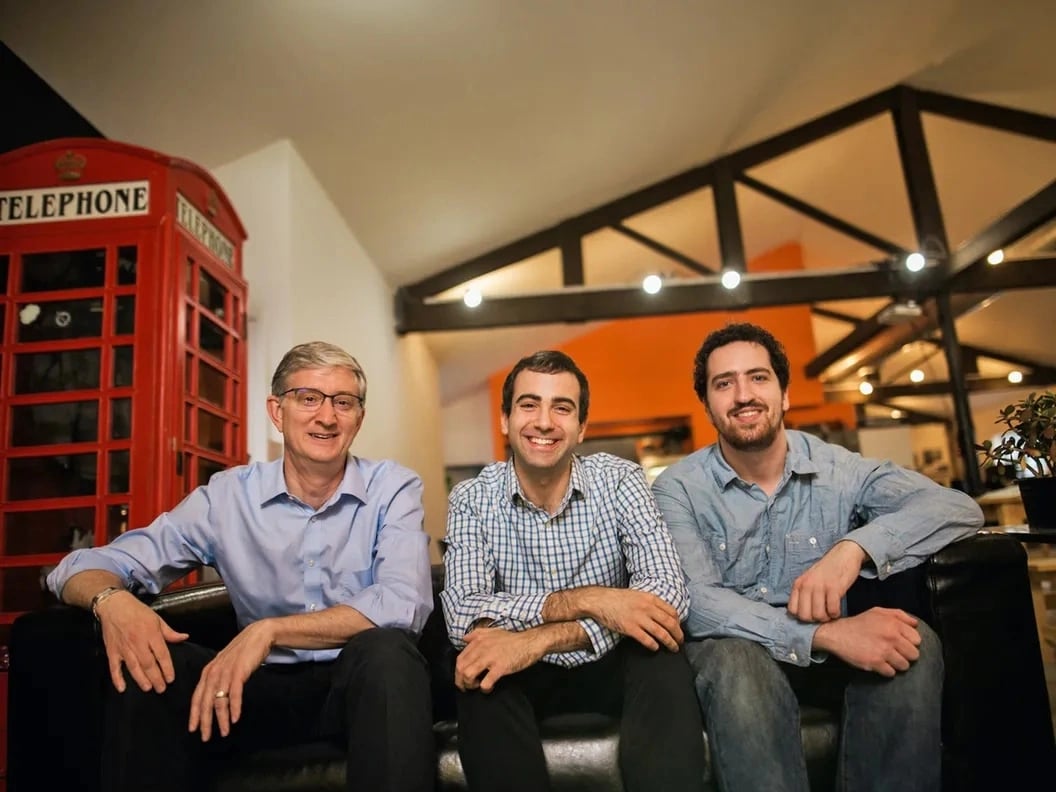Subscribe to wiki
Share wiki
Bookmark
Ed Felten
The Agent Tokenization Platform (ATP):Build autonomous agents with the Agent Development Kit (ADK)
Ed Felten
Ed Felten (full name Edward William Felten) is the Co-Founder and Chief Scientist of Offchain Labs, a venture-backed and Princeton-founded company responsible for developing Arbitrum. He is a retired Princeton Professor of Computer Science & Public Affairs as well as a former Deputy United States CTO at The White House.[1][2]
Education
Ed Felten attended the California Institute of Technology (Caltech) and graduated with a degree in Physics in 1985. He worked as a staff programmer at Caltech from 1986 to 1989 on a parallel supercomputer project. He then enrolled as a graduate student in Computer Science at the University of Washington. He was awarded a Master of Science degree in 1991 and a Ph.D. in 1993. His Ph.D. thesis was on developing an automated protocol for communication between parallel processors. [2]
Personal Life
Ed Felton lives in Princeton, New Jersey with his family. From 2006 to 2010, he was a member of the board of the Electronic Frontier Foundation (EFF). In 2007, he was inducted as a Fellow of the Association for Computing Machinery. [2]
Career
In 1993, Ed Felten joined the faculty of Princeton University in the Department of Computer Science as an Assistant Professor. He was promoted to Associate Professor in 1999 and to Professor in 2003. In 2005, he became the Director of the Center for Information and Technology Policy at Princeton. He has served as a consultant to law firms, corporations, private foundations, and government agencies. His research involves computer security and technology policy. [3]
In January 2011, Ed Felten was named the first Chief Technologist of the Federal Trade Commission, for which he took a one-year leave of absence from Princeton University. [4][25]
On May 11, 2015, Ed was named Deputy U.S. Chief Technology Officer for The White House. His expertise in the intersection of public affairs and computer science led him to experiences in government, academia, and advising. [2][5]
Offchain Labs
Ed Felten co-founded Offchain Labs alongside Steven Goldfeder and Harry Kalodner in September 2018. Offchain Labs is a venture-backed company responsible for developing Arbitrum, an "Optimistic Rollup" scaling solution for Ethereum. Ed started working on Arbitrum while at Princeton University where he met his co-founders. [6]
While at Princeton, the three co-founders developed the Arbitrum technology and published a paper in 2018. Offchain was created with a mission to scale Ethereum and bring it to the public. Ed and Steven are authors of the textbook Bitcoin and Cryptocurrency Technologies.
"Arbitrum acts like a layer between the user and Ethereum to give all the security guarantees of the blockchain while using a lot less of the core Ethereum resource" - Ed Felten, co-founder, Offchain Labs

In April 2019, Offchain Labs raised 3.7 million in seed funding. The round was led by Pantera Capital and included participants such as Coinbase Ventures. [7][8]
“The on-chain costs, in ethereum gas costs, increase as the storage in your decentralized application gets bigger and the amount of code that needs to be executed gets bigger. This limits the complexity and sophistication of the games you can have. So Offchain is taking an experimental approach to solve this issue.” - Ed Felten
In August 2021, Offchain Labs secured $120 million in a Series B fundraising round. The round was led by Lightspeed Venture Partners and also saw participation from crypto investors Polychain Capital, Pantera Capital, Alameda Research, and Mark Cuban. [4][9]
Arbitrum One
In August 2021, Offchain Labs announced the release of its Arbitrum One mainnet to the public. Arbitrum One has had several projects sign up for access on its platform since its beta launch for developers in May 2021. Offchain Labs created the platform to meet the demand for Ethereum scaling solutions that do not endanger the security of the base layer. Its EVM compatibility means that projects can deploy without altering their contracts. [9]
Arbitrum Nova
In August 2022, Offchain Labs introduced Arbitrum Nova as the chain designed for gaming and decentralized social applications. Arbirtrum Nova onboarded Reddit, the social media platform to build its Community Points on the chain. The deployment on Nova facilitated Ethereum developers to tap into the Reddit community. [10]
Controversy & Projects
United States vs Microsoft
Ed Felten testified as a witness for the United States government in United States v. Microsoft, where the software company was charged with committing a variety of antitrust crimes. During the trial, Microsoft's attorneys contested the assertion that it was possible to remove the Internet Explorer web browser from a Windows 98-equipped computer without significantly impairing the operation of Windows. [11]
Citing research he had undertaken with Christian Hicks and Peter Creath, two of his former students, Felten testified that it was possible to remove Internet Explorer functionality from Windows without causing any problems with the operating system. He demonstrated his team's tool in court, showing 19 ways in which it is normally possible to access the web browser from the Windows platform that his team's tool rendered inaccessible. [11]
Microsoft contended that the changes made by Felten did not completely remove Internet Explorer, but rather made its features inaccessible to the end user by removing icons, shortcuts, the iexplore.exe executable file, and making modifications to the system registry. This prompted discussion regarding what exactly is considered a "web browser," since much of the fundamental components of Internet Explorer are stored within a shared dynamic-link library, which can be accessed by any program running on Windows. Microsoft also argued that Felten's tool did not even completely remove web-browsing capability from the system since it was still possible to access the web through other Windows executables besides iexplore.exe, such as the Windows help system. [11]
The SDMI Challenge
Ed Felten participated in the 2000 Secure Digital Music Initiative (SDMI) challenge, which involved attempting to break digital audio watermark technologies. Participants were presented with a sample audio piece that had an embedded watermark and were tasked with removing it without causing unacceptable signal loss. Those who succeeded in the challenge were rewarded. [12]
Felten chose to not enter into confidentiality agreements that would have enabled his team to be eligible for the cash prize. He was only provided minimal information about the watermarking technologies and was given only three weeks to work with them. Despite this, his team managed to modify the files enough that the automated judging system of SDMI indicated the watermark had been removed. SDMI did not confirm that Felten had met the criteria of the competition, which involved maintaining sound quality since a submission wiping all sounds from the file would have removed the watermark but not met the quality requirement. [12]
SDMI Lawsuits
Ed Felten and his team published a scientific paper discussing the techniques they used to breach SDMI watermarks. Upon planning to present their paper at the Fourth International Information Hiding Workshop of 2001 in Pittsburgh, Felten was notified by SDMI, the Recording Industry Association of America (RIAA), and Verance Corporation of potential legal action under the terms of the DMCA. [13]
As a result, Felten withdrew the presentation from the workshop and instead read a brief statement about the situation. SDMI and other copyright holders denied that they had ever threatened to sue Felten, although spokesperson Matt Oppenheim warned Felten in a letter that "any disclosure of information gained from participating in the Public Challenge....could subject you and your research team to actions under the Digital Millennium Copyright Act." [13]*
Felten, with the help of the Electronic Frontier Foundation, sued the groups, requesting a declaratory judgment ruling that their publication of the paper would be legal. The case was dismissed for a lack of standing. Felten presented his paper at the USENIX security conference in 2001. The United States Department of Justice offered Felten and other researchers assurances that the DMCA does not threaten their work and stated that the legal threats against them were invalid. [14][15]
Sony Rootkit Investigation
In 2005, a security researcher revealed that Sony BMG's Extended Copy Protection software, found on certain music CDs, contained hidden files that could damage the operating system and make the user's computer vulnerable to attack when the CD was played. [16]
Sony released a software patch to remove the copy protection, but Felten and Halderman showed that it made the user's machine more vulnerable to attack, as it installed a rootkit in the form of an Active X control used by the uninstaller, and left it on the user's machine and set so as to allow any web page visited by the user to execute arbitrary code. Felten and Halderman described the problem in a blog post:
The consequences of the flaw are severe, it allows any Web page you visit to download, install, and run any code it likes on your computer. Any Web page can seize control of your computer; then it can do anything it likes. That's about as serious as a security flaw can get. [16]
DieBold Voting Machine Analysis
Ed Felten, Ariel Feldman, and Alex Halderman discovered security flaws in a Diebold Election Systems (now Premier Election Solutions) voting machine on September 13, 2006. Their findings claimed:
"Malicious software running on a single voting machine can steal votes with little if any risk of detection. The malicious software can modify all of the records, audit logs, and counters kept by the voting machine so that even careful forensic examination of these records will find nothing amiss." [17]
Sequoia Voting Machine Analysis
Election officials in New Jersey announced in early 2008 that they would send one or more Sequoia Advantage voting machines to Ed Felten and Andrew Appel for analysis. Sequoia then sent an e-mail to Professor Felten in March 2008 claiming that examining their machines would violate the license agreement between Sequoia and the county which bought them and that legal action would be taken if their intellectual property was infringed[18]. This sparked outrage from computer technology activists. [19][20]
Upon examination, Felten and Appel discovered accuracy issues with the machines and were able to hack and compromise them within minutes[21][22]. Shortly after, Sequoia's corporate website was hacked. The hack was first discovered by Ed Felten. Sequoia took its Web site down on 20 March and removed the "intrusive content." [23]
Cold Boot Attack
In February 2008, a team led by Ed Felten and his students discovered the cold boot attack, which permits retrieval of the contents of memory in a computer with physical access, bypassing operating system protections. [24]
Awards
See something wrong?
The Agent Tokenization Platform (ATP):Build autonomous agents with the Agent Development Kit (ADK)
